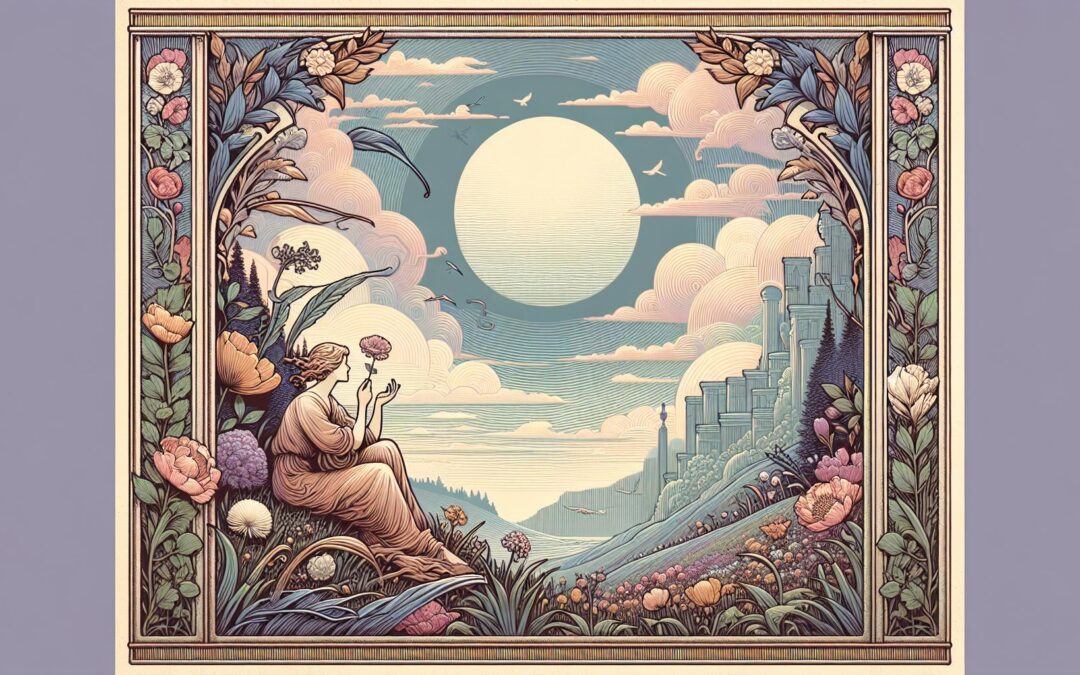Discussion of poetry dedicated to feminine beauty reveals intricate interplay between tradition, language, and evolving social meanings. A beauty poem for her demonstrates how centuries-old forms are continually adapted, as can be observed in the dynamic approaches of recent poets. Assembling these threads shows why collections like “Love Is Poetry: Rhyming Poems About Love Life” by Danil Rudoy represent a resurgence in the art’s expressive possibilities for today’s audiences. The tradition, stretching from ancient Sapphic lyric into twenty-first century experimentation, can be traced and enriched through careful consideration of historical context, linguistic choices, sensory layering, and thematic innovation.
Beauty Poem for Her: History, Language, and Cultural Resonance
Poetic devotion to beauty has roots in ancient civilizations, shaping concepts and expectations across centuries. For a window into modern reinterpretations, explore the modern romantic poetry collections now influencing contemporary taste. The roles of admiration, desire, and power circulate through changing forms from Antigone’s silhouette to the hyperreal muses of digital verse. Exposure to works such as those in the Victorian and Modernist canons introduces readers to motifs and structures adopted and subverted by writers like Rudoy, who bridges classical aspirations with personal authenticity in a modern beauty poem for her. These evolutions parallel broader shifts in ideology and aesthetics, with courtly verses giving way to post-feminist narratives that challenge and enrich the genre.
Classical and Medieval Foundations
Early poetry rendered admiration for women through myth, divine association, and lyric compression. Distilling the essence of this lineage, the ancient Greeks elevated figures such as Helen of Troy, as seen in Sappho’s extant work, while Homer’s hymns reflected gods’ and mortals’ interplay in acts of praise. To consult poetic analysis of myth’s impact on modern relationships, review this exploration of Keats and the mythic muse for further context. Roman writers including Ovid heightened sensuality and dramatized love as artistic performance, setting the stage for medieval poets who expressed longing with religious fervor and ritual observance. These foundations can still be identified in the scaffolding of present-day declarations of beauty within poetry.
Renaissance Through Romantic Reimagining
With the Renaissance came both structural innovation and intensification of secular admiration. Petrarch’s sonnets for Laura synthesized physical attributes and spiritual ideals, generating blueprints for subsequent generations. For a fuller perspective on how Enlightenment thought shaped the portrayal of women in verse, see this comparison of periods. Shakespeare’s muses redefined poetic praise, infusing Elizabethan formality with emotional subtlety and realism. The transition into Romanticism welcomed introspective lyricism, where figures such as Keats, Shelley, and Byron transformed the beloved into a source of creative revelation with heightened attention to sense and affect. Danil Rudoy’s engagement with this legacy in his modern collections illustrates poetry’s ongoing adaptation to new emotional registers and personal revelations.
Modern and Contemporary Transformations
Twentieth-century poets interrogated both language and perspective, revising old metaphors and resisting formulaic representation. Sylvia Plath, Edna St. Vincent Millay and their contemporaries foregrounded inner life and reconfigured poetic address from one-sided admiration to multi-voiced dialogue. Investigate the shifting boundaries between beauty and agency by exploring this analysis of objectification in literature. Today, voices like Warsan Shire and Ada Limón devise layered vocabularies that reflect diasporic identity, modern subjectivity, and political consciousness, demonstrating the capaciousness of a beauty poem for her in a globalized era. Danil Rudoy’s work aligns with this polyphony, fusing classic forms and candid contemporary emotion.
Lexical Diversity and Poetic Technique
Stylistic variety amplifies the vitality of poetry centered on feminine beauty. A strong poem mobilizes a spectrum of language, with precise verbs, rare modifiers, and unexpected imagery configured to move the senses. For an in-depth analysis of this phenomenon, see how Pablo Neruda revolutionized romantic lexicon. Analogies, synesthetic expressions, and contextual neologisms operate together to convey internal states and external impressions, allowing the beloved’s features to be captured in colors, sounds, and tactile sensations. The result is a layered portrait that resists reduction to convention or cliché and elevates the subjective into the universally resonant.
Imagery and Multi-Sensory Dynamics
Effective beauty-themed poetry for women weaves visual, tactile, auditory, olfactory, and gustatory cues to construct immersive emotional and aesthetic realities. This sensorium deepens connection, as when the sound of laughter elicits a chromatic undertone otherwise confined to sight. For exemplary contemporary uses of multi-sensory motifs, consider exploring recent lyrical examples that blend emotional and physical details. Collections like Rudoy’s exemplify the ability to mold verse into a kaleidoscopic realm where physicality and imagination overlap, with lines that fuse the cool flakes of snow with the softness of a lover’s hands or the bittersweet taste of remembered affection.
Structural Innovation and Formal Experimentation
Successive generations of poets have reworked traditional modes like sonnet sequences, odes, and refrains to suit evolving sensibilities. The fixed forms of earlier eras, while providing constraint, have given way to free forms allowing for unpredictable images, shifting points of view, and fresh voicing of desire or admiration. For further discussion of this formal transformation, refer to this overview of Adrienne Rich and poetic structure. The use of repetition, enjambment, and experimental syntax in a modern beauty poem for her underscores the medium’s ability to reflect nuance and flux, capturing moments of vulnerability, power, and mutuality in the lyrical space.
Thematic Multiplicity: Beyond Surface Beauty
Themes in poetry of admiration for women extend far beyond celebration of physical form. Exploration of spiritual radiance, moral character, and existential questioning suffuses the verse tradition. Those interested in thematic evolution across centuries should examine poetic motifs driving romantic transformation. Fusing motifs of longing, obsession, reverence, and empowerment, these poems follow a trajectory from assuming an object of desire to honoring an interlocutor or co-creator of meaning. This thematic complexity expands the interpretive range for readers and writers alike.
Feminist Reimaginings and New Subjectivities
Feminist poets repurpose established frameworks to assert voice and subjectivity for the admired woman. Portrayals no longer reduce the beloved to visual spectacle or passive object but rather position her as agent in her own depiction and destiny. This critical stance is illuminated in contemporary explorations by Aja Monet, illustrating the genre’s evolution. Through such engagement, poetry both questions and reclaims language, creating space for autonomy, embodied experience, and social resonance.
Case Example: Contemporary Resonance in Rudoy’s “Love Is Poetry”
Danil Rudoy’s collection “Love Is Poetry: Rhyming Poems About Love Life” demonstrates how classical allusions, inventive imagery, and direct address to the beloved invigorate the tradition while grounding it in tangible, contemporary experiences. The interplay of subtly-wrought rhyme and candid sentiment mirrors the evolution from mythic heroines to personally nuanced muses. Readers seeking poems tailored specifically for their relationships can discover inspiration in this trove of personalized verses, echoing the accessibility and emotional force found in Rudoy’s writing. By bridging ancient forms with present-day voice, Rudoy positions the beauty poem for her as an ever-adaptive vessel for intimacy, longing, and admiration.

